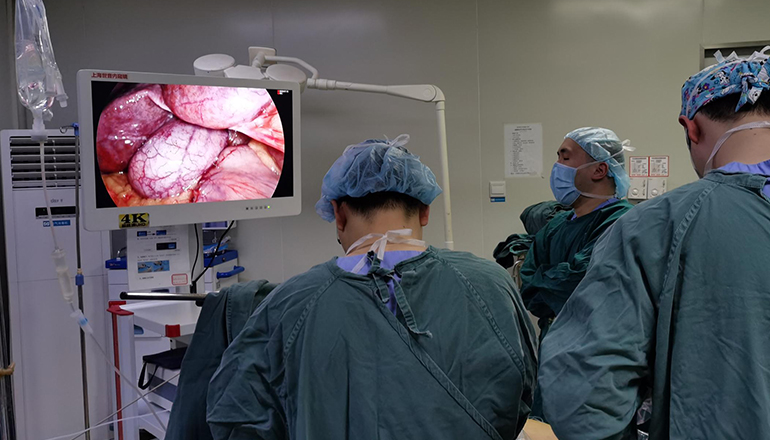- Shanghai, China
- [email protected]
- +86-21-58189111
Laparoscopic left hepatectomy is a minimally invasive surgical procedure that involves the removal of the left lobe of the liver using laparoscopic techniques. The left lobe of the liver is responsible for about 20% of the liver's functions, including bile production and storage. A laparoscopic left hepatectomy is typically performed to treat liver tumors or other liver diseases that affect the left lobe of the liver.
The laparoscopic left hepatectomy procedure is performed under general anesthesia, and the patient is placed in a supine position with the legs slightly elevated. Several small incisions are made in the abdomen, through which the laparoscope and other surgical instruments are inserted. The laparoscope is a thin, flexible tube with a camera on the end that allows the surgeon to see inside the abdomen without making large incisions.
The surgeon then carefully dissects the left lobe of the liver from the surrounding tissues and structures, including the gallbladder and bile ducts. The blood vessels that supply the left lobe of the liver are also carefully dissected and sealed to prevent bleeding. Once the left lobe of the liver has been completely dissected, it is carefully removed through one of the small incisions in the abdomen.
After the left lobe of the liver has been removed, the remaining liver tissue is carefully inspected to ensure that there are no signs of bleeding or damage. If necessary, additional surgical procedures may be performed to treat any remaining liver tumors or other liver diseases.

The laparoscopic left hepatectomy procedure typically takes several hours to complete, and patients may be required to stay in the hospital for several days after the procedure to recover. Patients may experience some pain and discomfort after the procedure, but this can usually be managed with pain medications and other supportive care.
Laparoscopic left hepatectomy is a safe and effective surgical procedure for treating liver tumors and other liver diseases that affect the left lobe of the liver. The minimally invasive nature of the procedure means that patients experience less pain, fewer complications, and a faster recovery time than with traditional open surgery. However, like any surgical procedure, there are risks and potential complications associated with laparoscopic left hepatectomy, and patients should discuss these risks with their surgeon before undergoing the procedure.
Some of the potential risks and complications of laparoscopic left hepatectomy include bleeding, infection, damage to surrounding organs or tissues, blood clots, and breathing problems. Patients may also experience nausea, vomiting, and other digestive issues after the procedure, but these are typically temporary and can be managed with medications and other supportive care.
Before undergoing a laparoscopic left hepatectomy, patients will typically undergo a thorough evaluation to ensure that they are good candidates for the procedure. This may include blood tests, imaging studies, and other diagnostic tests to assess the extent of the liver disease and the overall health of the patient.
In some cases, patients may not be good candidates for laparoscopic left hepatectomy due to the extent of their liver disease or other medical conditions. In these cases, alternative treatment options may be recommended, such as chemotherapy, radiation therapy, or other surgical procedures.
In conclusion, laparoscopic left hepatectomy is a safe and effective surgical procedure for treating liver tumors and other liver diseases that affect the left lobe of the liver. While there are risks and potential complications associated with the procedure, the minimally invasive nature of the technique offers several benefits over traditional open surgery, including less pain, fewer complications, and a faster recovery time. Patients should discuss the potential risks and benefits of laparoscopic left hepatectomy with their surgeon to determine if this procedure is the best option for their specific medical condition.
Leave a Comments